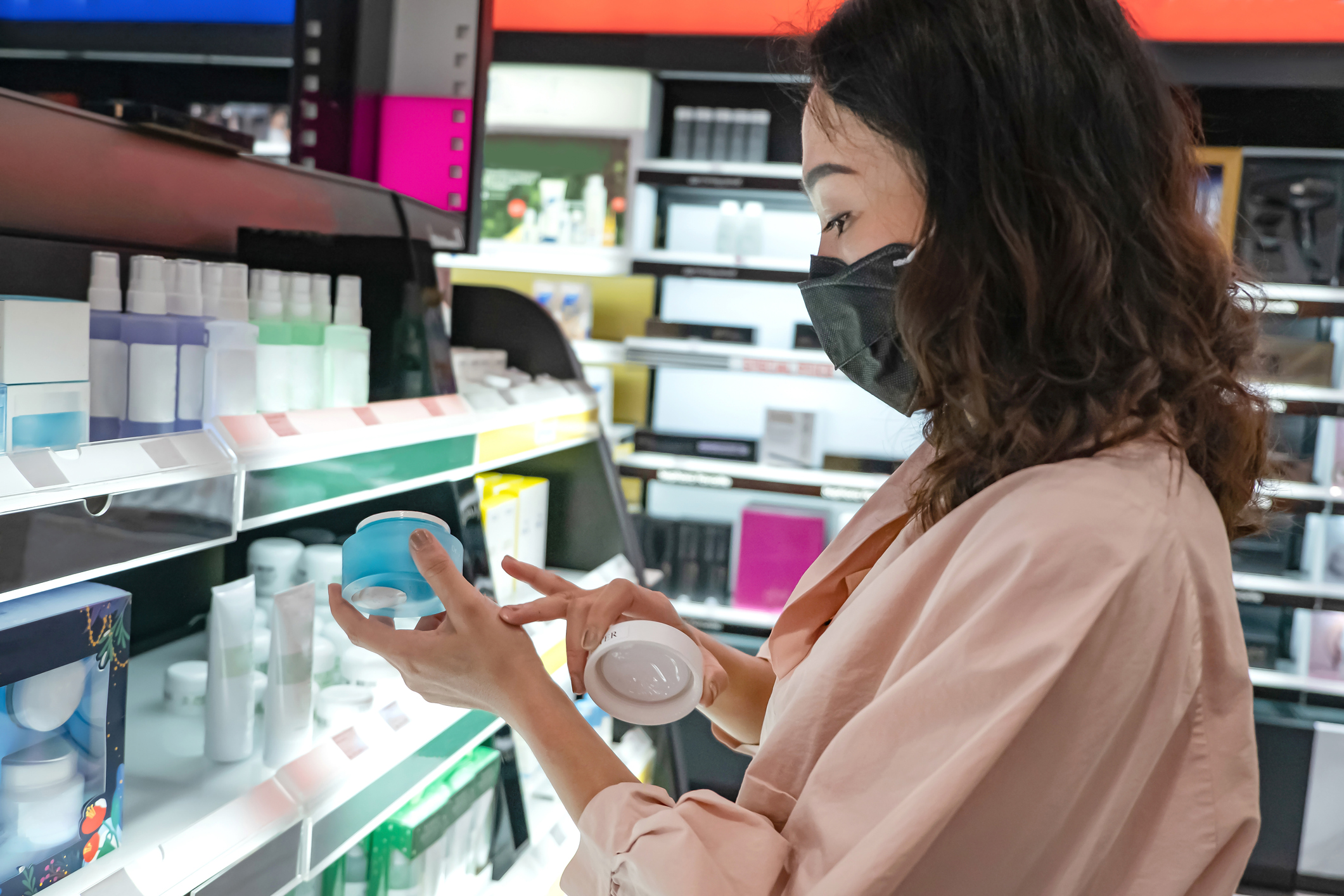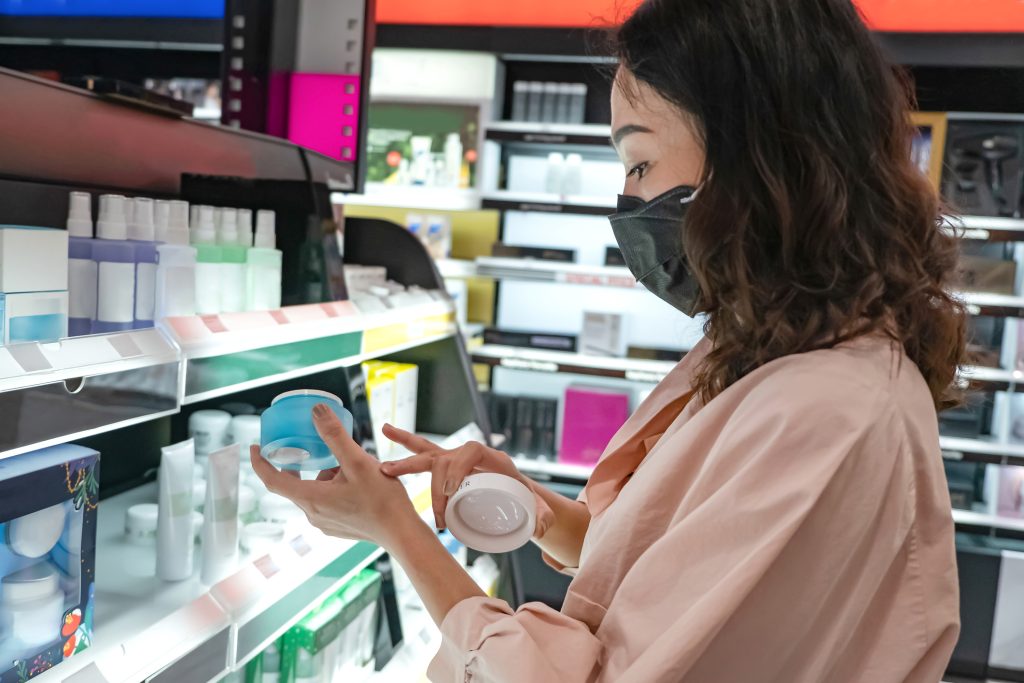Everything we learned at Intrepid’s ACG Los Angeles Business Conference Beauty Care Panel
What happens when an M&A banker, a private equity pro, and two entrepreneurs walk into a room? Well, if that room happened to be the sweeping Wilshire Ballroom in The Beverly Hilton Hotel during this month’s ACG Los Angeles Business Conference 2021, the correct answer would be: you’d learn a lot.
The panelists in question: Intrepid Investment Banker’s own Lauren Antion, a Vice President in the Beauty & Personal Care practice who has held key roles on a multitude of branded beauty deals; Brentwood Associates’ Katherine Mossman, who leads the beauty and wellness effort for the firm and has acted as an investor, advisor, or board member for brands like Credo Beauty, Devacurl, and W3LL People; serial entrepreneur/reality TV star/Attorney-at-law Lilly Ghalichi Mir, who founded Lilly Lashes and Hairtamin; and Clint Carnell, longtime CEO of the newly-public Hydrafacial Company and founder and Chairman of OrangeTwist brands, a network of centers that offer non-invasive treatments to help clients look and feel their best.
Yep — they’re such an impressive bunch that I’ve left out most of their credentials and it’s still more than I can say in one breath. The really crazy part: They’re even more impressive in person, giving off-the-cuff advice about selling, advising, and running brands in the post-pandemic era. Without further ado, I give you six key takeaways from the Intrepid’s ACG Beauty Care panel that all beauty brands should be leveraging now:
-
Good branding can’t make up for bad fundamentals
Despite the seeming frenzy to invest in the beauty space, private equity investors like Mossman will look past chic branding and charming origin stories every time if the fundamentals are MIA. “I’m always looking for strong unit level economics. Sometimes businesses are broken and can never get up the curve because they never had a profitable model to begin with,” Mossman says. If you’ve got that box checked, your second priority should be making sure your customers are always coming back for more. “There might be a lot of buzz around a particular product, but what I want to see to evidence staying power is that they’re in a subcategory that leads to strong replenishment and that there have already been strong repeats and loyalty associated with that product,” Mossman adds.
-
Brick-and-mortar isn’t dead, but single-channel thinking is
Forget everything you learned in business school about sending customers through a linear purchasing funnel and start thinking creatively about meeting them where they are—and continuing to engage them. “We go out and find consumers in the virtual marketplace, drive them to a physical activation, and then keep that relationship with them back in the virtual marketplace,” Carnell says. More importantly, he believes channels can amplify, not cannibalize, each other’s success, if you lean into the possibility. “We have a relationship with brands like Sephora, Ulta, and Nordstrom. The data show that if a customer comes in and gets a Hydrafacial, they spend two to three times more on product and come in more frequently. So we're increasing their bag. What they're giving us is a captive consumer that probably didn't hear about us, that then we send back out to our med spa channel or day spa channel.”
-
Your audience should be your R&D team
Crowdsourcing your product development could be worth a whole lot more than a pricey McKinsey study, if you let it. “Since we’re socially driven, we started doing social surveys, [asking] ‘What product do you want to see from us next? We started developing only products that were number one or number two. And the success rates of those products are phenomenal,” Ghalichi Mir says. But it just might take a trust fall or two. Lilly Lashes customers begged for a mascara—a product she didn’t initially imagine carrying, since the brand was built around a mascara alternative. “We were like, ‘Why do people want to see a mascara, we’re a [false] lash line?’ But we made one and it was a huge hit.” The customer is, in fact, always right.
-
Turning down opportunities can create real value
Saying “no”—especially when a big retailer or expansion opportunity comes knocking—seems like an obvious mistake. But saying yes (without being strategic) could be an even bigger mistake. “It is difficult for brands to say no when retailers come knocking at the door or you have an opportunity to expand into a number of international markets,” Antion acknowledges. “But picking one retail partner, and driving traffic, velocity, and sell-through at that retailer, or picking one country and going deep in that market can create the proof points for a much bigger long-term opportunity — rather than spreading the brand thinly across many retailers or international markets. Depth versus breadth as a starting point can drive a lot of value,” Antion says. Then you can take that impressive case study and leverage it to expand into other retailers or markets in a bigger way…or to provide a strategic acquirer a preview of the success they could have if they took your brand global. Sell the sizzle!
-
Being omni-channel is no longer enough—but diversified advertising can help
Thanks to a privacy-minded iOS change, consumers now need to opt-in—rather than opt-out—of data tracking. Currently, less than 5% of consumers have opted in, Antion says, making Facebook advertising less effective at targeting audiences and tanking brands’ ability to cheaply acquire and cater to would-be customers — exposing a chink in the armor of brands that heavily relied on Facebook and Instagram for the majority of their new customers. “We're seeing the impact on several brands in terms of increasing customer acquisition costs, and in some cases, slowed revenue growth, given the difficulty targeting qualified audiences,” Antion explains. But all is not lost—Antion suggests softening the blow with strategies like customer surveys (sent out via email), using detailed analysis of historical Facebook data to more effectively target key demographics through other forms of advertising, and redirecting funds to more alternative channels such as influencers, YouTube, Tik Tok, and traditional in-store marketing. Everyone talks about diversification across retail channels — we are now seeing the importance of diversification across advertising spend.
-
Soft skills could be the secret to a smoother supply chain
When one crisis (the pandemic) triggered another one (supply chain issues galore) this past year, Mossman advised her brands to not only think more critically about their assortment (what products would move fastest if they were made available) but urged them to prize their relationships with vendors. “Vendor relationships have become much more high-touch,” Mossman says. “It’s essential to manage these relationships much more closely to make sure that folks can get to the front of the line or get little favors at the last minute.” It also underscores the importance of vendor diversification, Mossman says. “We’ve seen more concentration at times in the past, but diversification is important in this changing environment.”

